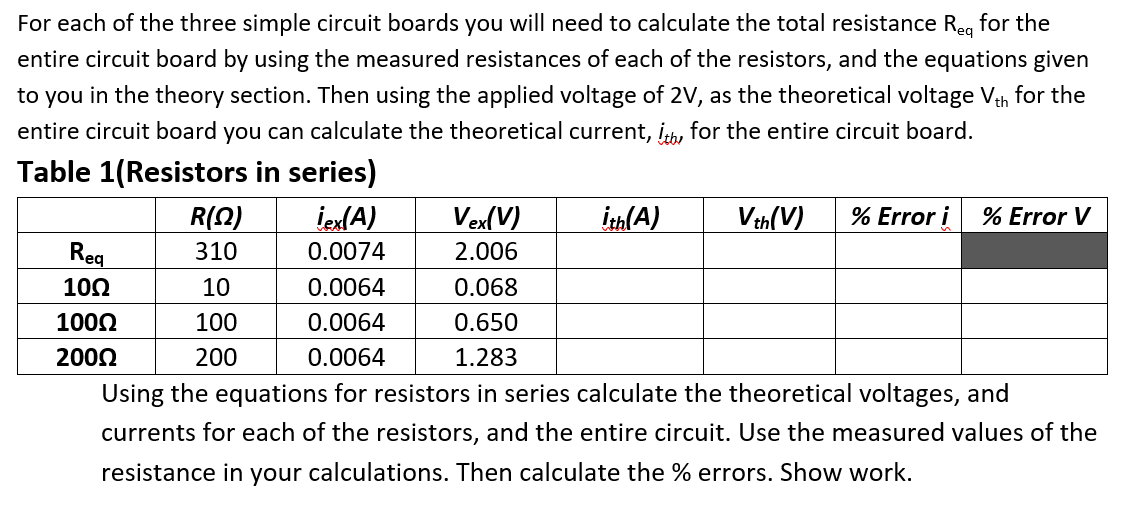For each of the three simple circuit boards you will need to calculate the total resistance Reg for the entire circuit board by using the measured resistances of each of the resistors, and the equations given to you in the theory section. Then using the applied voltage of 2V, as the theoretical voltage Vth for the entire circuit board you can calculate the theoretical current, ith, for the entire circuit board. Table 1(Resistors in series) Req R(Q) 310 iex(A) 0.0074 Vex(V) 2.006 ith(A) Vth(V) % Error i % Error V
For each of the three simple circuit boards you will need to calculate the total resistance Reg for the entire circuit board by using the measured resistances of each of the resistors, and the equations given to you in the theory section. Then using the applied voltage of 2V, as the theoretical voltage Vth for the entire circuit board you can calculate the theoretical current, ith, for the entire circuit board. Table 1(Resistors in series) Req R(Q) 310 iex(A) 0.0074 Vex(V) 2.006 ith(A) Vth(V) % Error i % Error V
Related questions
Question
100%

Transcribed Image Text:For each of the three simple circuit boards you will need to calculate the total resistance Reg for the
entire circuit board by using the measured resistances of each of the resistors, and the equations given
to you in the theory section. Then using the applied voltage of 2V, as the theoretical voltage Vth for the
entire circuit board you can calculate the theoretical current, ith, for the entire circuit board.
Table 1(Resistors in series)
R(Q)
310
10
100
200
Req
10Ω
1000
200Ω
iex(A)
0.0074
0.0064
0.068
0.0064
0.650
0.0064
1.283
Using the equations for resistors in series calculate the theoretical voltages, and
currents for each of the resistors, and the entire circuit. Use the measured values of the
resistance in your calculations. Then calculate the % errors. Show work.
Vex(V)
2.006
ith(A)
Vth(V) % Error i % Error V
Expert Solution
This question has been solved!
Explore an expertly crafted, step-by-step solution for a thorough understanding of key concepts.
This is a popular solution!
Trending now
This is a popular solution!
Step by step
Solved in 3 steps with 3 images
